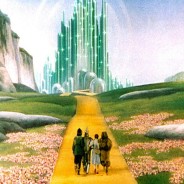Writing and Healing Idea #29: A Title for Your Quest
Imagine for a moment that someone approaches you and tells you that they want to write a book about your life. But they need some help. They need a title for one thing. Perhaps they invite you to call out the first title that comes to mind. Then the second title. The third. Perhaps they tell you they need you to make a list of all the titles that come to mind and when you’re finished they offer to help you choose the best one. And perhaps it might help while you’re thinking about your own list of possible titles to consider other titles. You may want to look around your own bookshelf for ideas. Or a trip to the bookstore might provide inspiration. Or a trip to the library. Memoirs especially can be a good source of titles that embody a sense of quest. Here are four (five actually), drawn from my own bookshelves, and offered along with a brief summary of what each title depicts: Meditations from a Movable Chair. Andre Dubus’ collection of autobiographical pieces, written after Broken Vessels (that searing memoir published after he lost his legs in an accident) and describing life as he sees it now from the vantage point of his wheelchair. Holy Hunger. Margaret Bullit-Jonas’ memoir about healing from an eating disorder and, in the process, reframing her hunger as a spiritual hunger. Breaking Clean. Judy Blunt’s memoir of leaving the flats of Montana and her life as a rancher’s wife to pursue her own dreams. Stronger than Dirt. A husband and wife’s memoir by Chris Losee and Kim Schaye about leaving Brooklyn to start a flower farm in upstate New York....
read more
